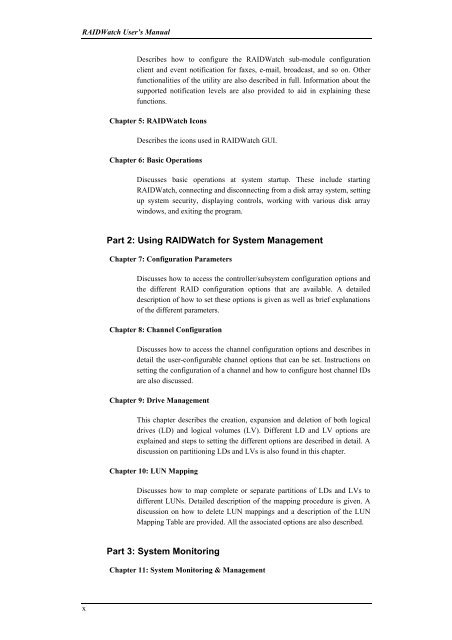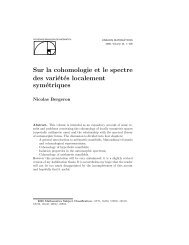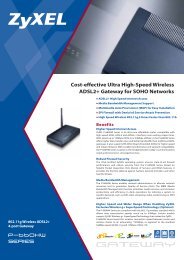RAIDWatch User's Manual
RAIDWatch User's Manual
RAIDWatch User's Manual
You also want an ePaper? Increase the reach of your titles
YUMPU automatically turns print PDFs into web optimized ePapers that Google loves.
<strong>RAIDWatch</strong> User’s <strong>Manual</strong><br />
Describes how to configure the <strong>RAIDWatch</strong> sub-module configuration<br />
client and event notification for faxes, e-mail, broadcast, and so on. Other<br />
functionalities of the utility are also described in full. Information about the<br />
supported notification levels are also provided to aid in explaining these<br />
functions.<br />
Chapter 5: <strong>RAIDWatch</strong> Icons<br />
Describes the icons used in <strong>RAIDWatch</strong> GUI.<br />
Chapter 6: Basic Operations<br />
Discusses basic operations at system startup. These include starting<br />
<strong>RAIDWatch</strong>, connecting and disconnecting from a disk array system, setting<br />
up system security, displaying controls, working with various disk array<br />
windows, and exiting the program.<br />
Part 2: Using <strong>RAIDWatch</strong> for System Management<br />
Chapter 7: Configuration Parameters<br />
Discusses how to access the controller/subsystem configuration options and<br />
the different RAID configuration options that are available. A detailed<br />
description of how to set these options is given as well as brief explanations<br />
of the different parameters.<br />
Chapter 8: Channel Configuration<br />
Discusses how to access the channel configuration options and describes in<br />
detail the user-configurable channel options that can be set. Instructions on<br />
setting the configuration of a channel and how to configure host channel IDs<br />
are also discussed.<br />
Chapter 9: Drive Management<br />
This chapter describes the creation, expansion and deletion of both logical<br />
drives (LD) and logical volumes (LV). Different LD and LV options are<br />
explained and steps to setting the different options are described in detail. A<br />
discussion on partitioning LDs and LVs is also found in this chapter.<br />
Chapter 10: LUN Mapping<br />
Discusses how to map complete or separate partitions of LDs and LVs to<br />
different LUNs. Detailed description of the mapping procedure is given. A<br />
discussion on how to delete LUN mappings and a description of the LUN<br />
Mapping Table are provided. All the associated options are also described.<br />
Part 3: System Monitoring<br />
Chapter 11: System Monitoring & Management<br />
x











